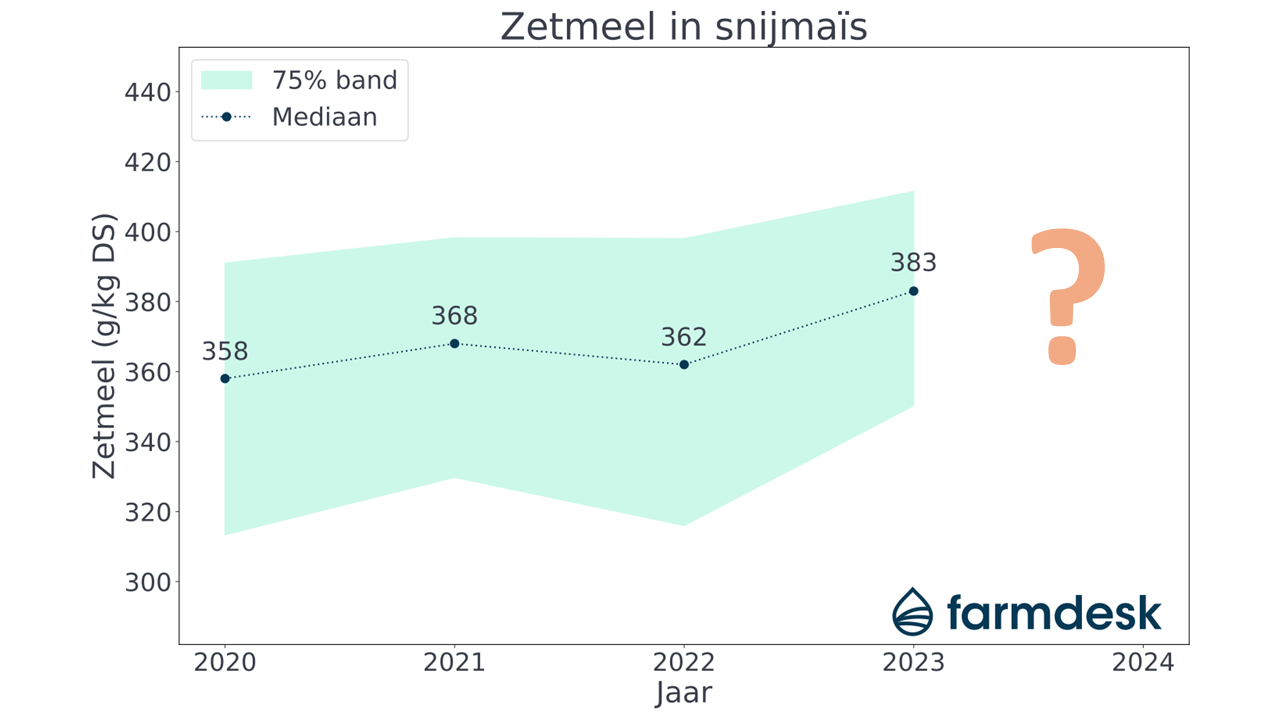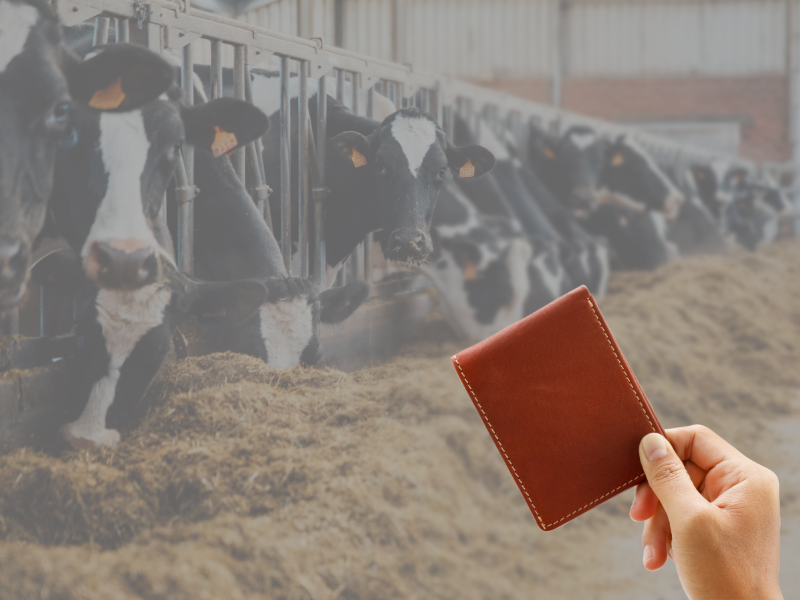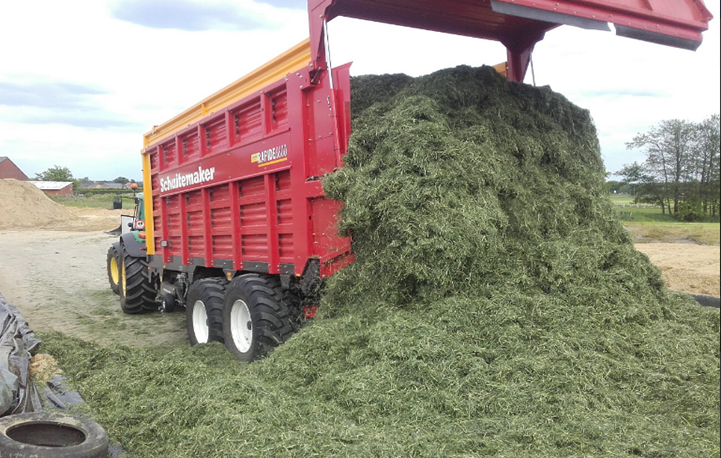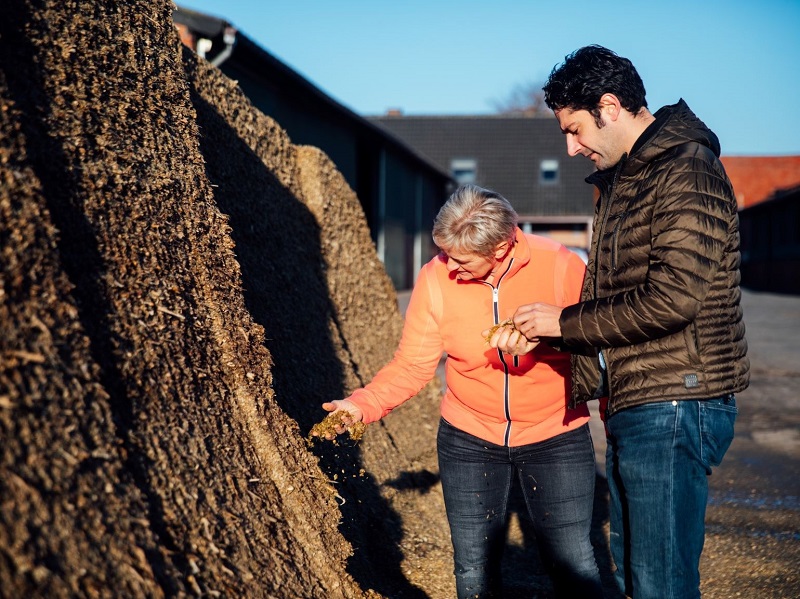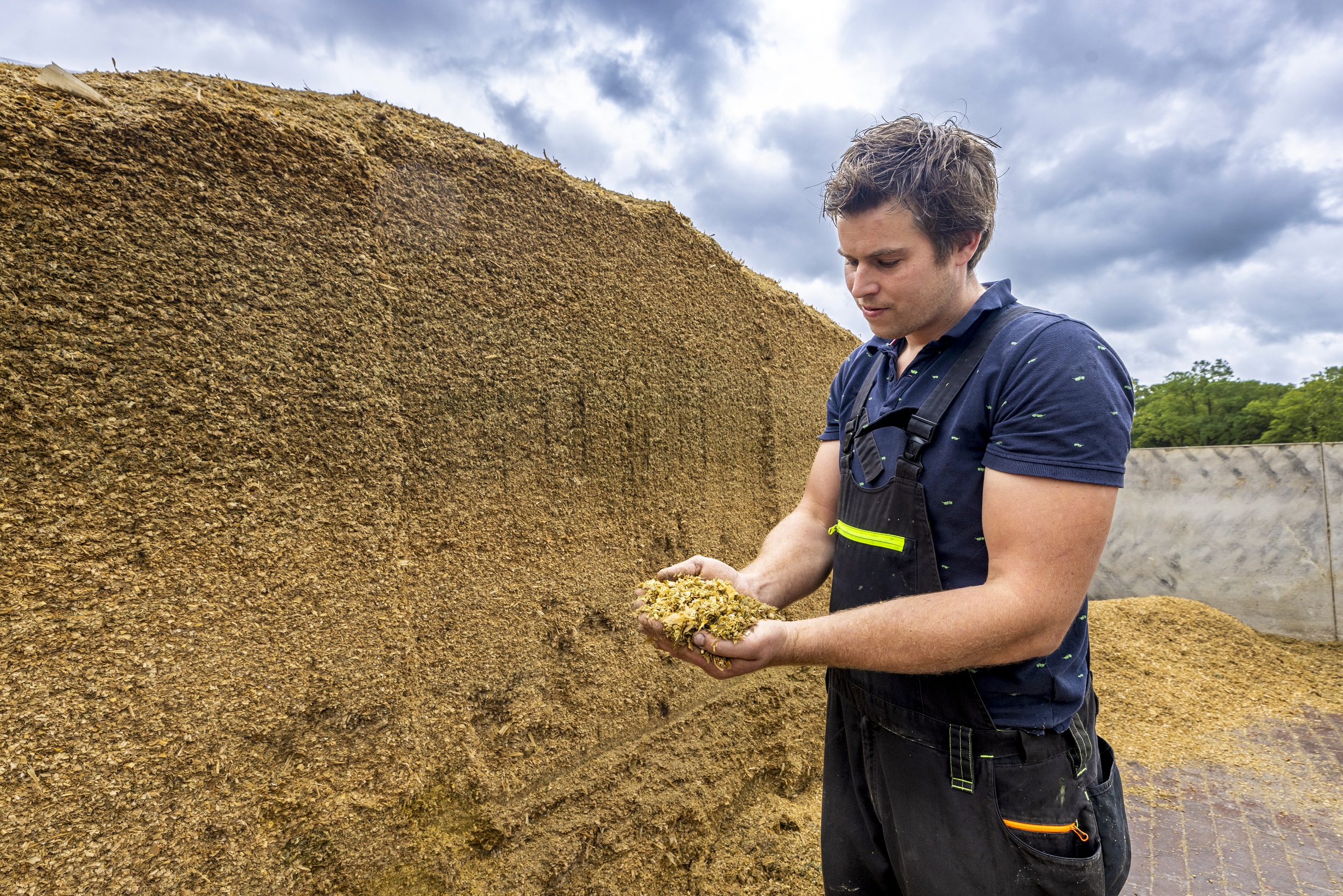As a dairy farmer, it is important to fully understand thebasic workings of your animals' digestive systems. In this multi-part series of articles, we once again take you through the most important concepts.
In a previous article in this series, the basics of energy digestion were given in advance. In this article, we take a closer look at protein digestion, and how energy digestion comes in between.
Protein components in feed materials.
As with energy components, protein is available to ruminants in different forms. The conversions of the various protein components are presented schematically in the figure at the bottom of this article.
Crude protein (CP) is said to be only partially digestible, thus we arrive at digestible crude protein (DCP). This fraction can be divided into the intestinal digestible protein (DVE) or rumen digestible protein and intestinal protein (OE) or rumen digestible protein.
Crude protein
The amount of crude protein in a feedstuff is determined by the amount of nitrogen present in a feedstuff. The crude protein content is calculated by first determining the amount of nitrogen via the Kjeldalh method. The amount of nitrogen is converted back to the amount of protein via the formula CP = 6.25 x nitrogen.
During the preservation process (ensiling), ammonia (NH3) is sometimes formed as a breakdown product. This, according to the calculation above, is also part of crude protein. A high ammonia fraction in the silage indicates poor preservation and high protein degradation. Often, poor acidification of the silage is at the root of protein breakdown by butyric acid bacteria, which can continue to do their job at a relatively high pH and/or low osmotic pressure. These present butyric acid bacteria can also give rise to butyric acid bacteria in the milk and thus negatively affect dairy quality.
Intestinal digestible protein
The intestinal digestible protein (DVE) is the amount of protein that is available and digestible in the small intestine. This protein passes the rumen intact and will be enzymatically digestible in the small intestine. Intestinal digestibility can be represented as a nice, completechain of amino acids, as shown in the figure below:
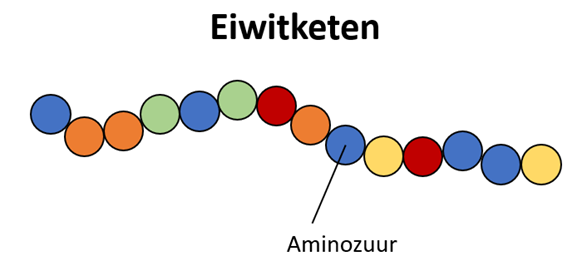
A schematic representation of an amino acid in the image below shows that each amino acid carries a nitrogen (N) atom, this indicates the need for nitrogen fertilization in order to provide sufficient protein in crops.
In total, there are 20 amino acids that proteins can be made up of. In a subsequent article, we will discuss further the usefulness and importance of these different amino acids.
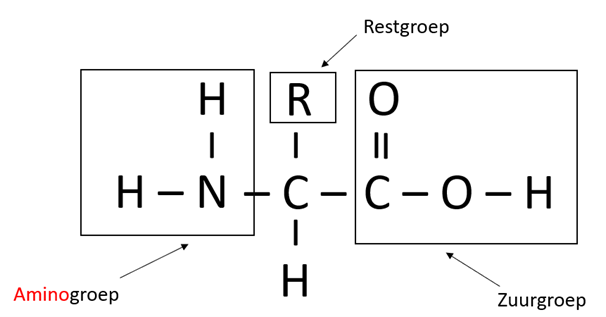
Unstable protein
The unresistant protein (OE) is protein available for microbial digestion in the rumen. In principle, unresistant protein does not have to be a true protein as a chain of amino acids. An organic nitrogen source can already play the role of unresistant protein, unlike the complete amino acid chains in the case of intestinal digestible protein.
The unrefractory protein can be used as a building block by the pensflora, provided sufficient fermentable organic matter (FOS) is present. The balance between protein and energy in the rumen is very important. The term used to balance protein digestibility in the rumen is the incompatible protein balance (OEB). Mathematically, this is represented as follows: OEB= OE-0.15*FOS. In theory, the OEB value of a complete ration should be zero, but in practice the target value may be somewhat higher to stimulate milk production. With a positive OEB, there will be excess protein in the rumen relative to available energy. A negative OEB will indicate that there is a relative deficiency of rumen protein relative to the energy in the rumen.
Milk urea can be an indicator of the OEB value of your ration and indicates how the cow handles it. A high OEB value gives rise to high urea levels in the milk. Urea levels in the milk will decrease if the OEB value of the ration is lower.
Further digestion of protein
The microbial life formed in the rumen will also be partially digested by the cattle. Thus, this microbial (gut digestible) protein (MDVE) will be a full-fledged protein source that can be further digested in the small intestine.
After enzymatic digestion of the protein in the thin intestine, the amino acids are absorbed into the blood. The amino acid composition of microbial protein is aligned with the amino acid composition of milk protein. Glycogenic energy provides the ability to link these amino acids into protein in body cells or to produce milk protein in the udder.
A good rumen function to form microbial protein and free fatty acids can ultimately give rise to a balanced amino acid pattern and sufficient glycogenic energy. Therein lies the secret of high milk protein levels.
Interplay between protein and energy
In the interplay to achieve good digestion, the protein supply must be just sufficient, in addition to a balanced energy supply with sufficient rapidly digestible carbohydrates, supplemented by a robust rumen activity. The carbohydrates should partially make energy available in the rumen, but they should also provide the basis for milk and body fat and, in addition, make sufficient glycogenic energy available in the body to achieve proper protein synthesis at the cellular level.
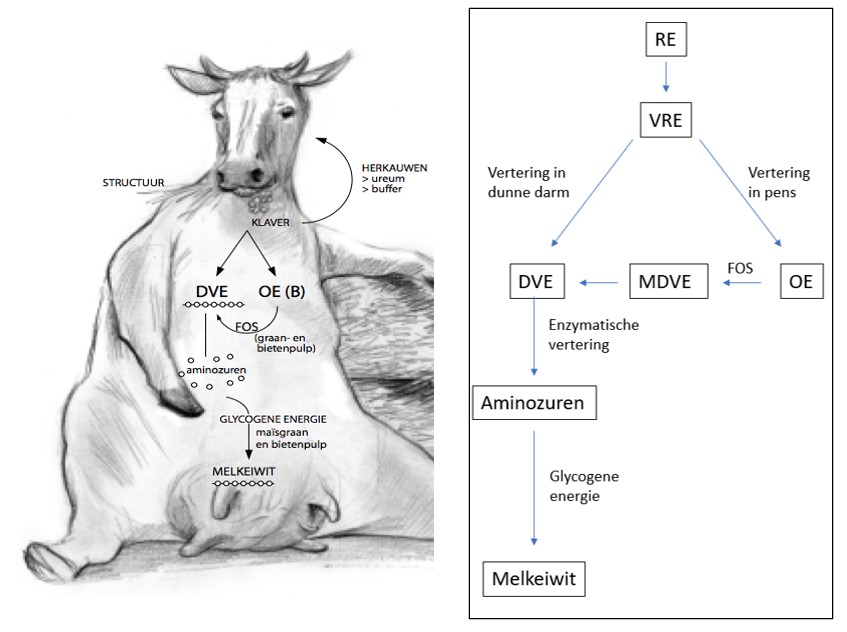
Furthermore, there must be sufficient mechanical puncture in the rumen (read sufficient structure in the feed) to encourage cows to rumen activity. The chemical puncture in the rumen initiates rumen papillae growth. Large rumen papillae increase the surface area of absorption. The free fatty acids produced in the rumen can thus be better absorbed into the blood, triggering a large nutrient flow in the blood while relieving the rumen of the acidifying effect of the fatty acids produced.
With her specific digestive system, a cow goes truly profitable as a ruminant by digesting material that is indigestible to monogastrics (and therefore to humans) and even being able to recycle protein breakdown products from her own metabolism by creating an optimal environment in the rumen for microbial growth.


